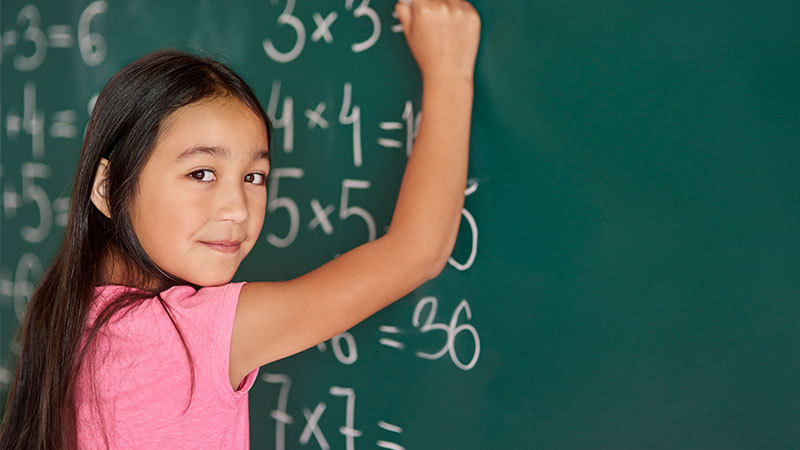Tommy was that kid. In elementary school, he was constantly making noises and disrupting class. In middle school, he breezed through classes, often getting averages over 100 percent. (He always got the bonus questions correct.) In high school, he almost flunked AP American History and never struggled with classwork until junior year (AP Calculus).
Behavior disorder? ADHD? Neither.
Tommy was gifted.
Teachers often struggle to challenge students with high intellectual needs and resort to assigning extra work, letting them read independently, or making them assist other students. Too many bright students are content to do the extra work, whizzing through those worksheets like a challenge to see how fast they can finish. Often, these students love to read, so having time to read after finishing work is a fabulous reward.
But when it comes to helping other students – well, anyone who has worked with highly gifted students knows they may resort to bossing other kids around, being unintentionally condescending, or just doing the work for them. In any of the above instances, there’s the potential for these students to develop behavioral issues and act out in frustration or rebellion.
Taking on the Challenge
The challenge for educators is common. How do we create activities that are challenging for gifted children to ensure that learning is a constant?
The traditional classroom presents students with the same content that is expected to be learned in the same way. Accelerated students need more. Not more work, but more thoughtfully designed instruction. The best way to meet the needs of gifted students is to consider content, process, and product when planning.
Teachers must first look at the content being taught and find out what the student already knows. It’s possible for gifted children to complete as much work as other students and still gain nothing from it. Tommy is an excellent example of this. When asked to define 75 of a possible 100 terms, he chose terms he already knew. Because his teacher wasn’t aware of his knowledge base, Tommy was able to beat the system by completing the assigned work without learning anything new. When you know which aspects of the material the student does and doesn’t know, then you can focus on deeper connections related to the content that will promote new learning and critical thinking.
When the content is new, the teacher needs to determine how the content will be learned. For gifted students, sitting through traditional instruction is like watching a show in slow motion. Listening to a lecture, completing assigned worksheets, and answering test questions are part of a predictable and repetitious system that gifted children like Tommy can easily best. Instead, consider introducing another process.
Finally, product may need to differ to challenge gifted students. You might be thinking that it’s not fair for gifted students to do something that other students aren’t allowed to do. It’s important to remember that fair is not always equal. What’s fair is ensuring that all students are being challenged and are learning, and that will often look different for all children. It’s imperative, though, to assess learned knowledge in gifted students to ensure they are progressing and assigning a different work product to demonstrate that is critical. Tommy almost failed AP American History because he never completed the required chapter outlines. He read and understood the chapter – why did he have to write an outline of it?
Ideas for Challenging Your Gifted Students
So, what are challenging activities for gifted children? Yes, you access Google and Pinterest for all kinds of activities for students to complete in class, but none will guarantee challenge and learning. Instead, I encourage you to think of designing activities using universal strategies that will enhance and support learning for gifted students. Some ideas include:
1. Complexity: Provide materials and information at varying levels of complexity according to reading level, vocabulary, and information. (Content and process)
2. Acceleration: Determine concepts and skills that extend beyond grade level material. Small group or individual instruction and assignments can be given on new concepts, while the rest of the class is working on independent assignments. (Content, process, and product)
3. Questioning: During instruction, pose questions that focus on asking “how” and “why,” followed with pushing the student to support their answers with evidence. Asking gifted students to dig deeper into the material activates critical thinking. (Process)
4. Research: Providing opportunities to do research related to content topics or on self-selected topics is an excellent way for students to be actively engaged in new learning. (Content, process, and product)
5. Problem-solving: Provide real-world problems related to content and have students seek solutions through research, interviews, experiments, and developing conclusions. (Content, process, and product)
6. Presentations: Visual or oral presentations of research conducted that relates to whole class content. Teachers can bring additional meaning and relevance to independent research by using their information to support and enhance learning for the rest of the class. (Process and product)
7. Technology: Find programs that will challenge and support learning that results in developing products that showcase new learning from research or experimentation. Collaborating with the school media specialist or tech teacher will reap benefits for all.
Tommy was my son. Like many gifted kids, he didn’t mind taking the easy ways out of hard work. But I watched him thrive as a learner when he had teachers who knew how to challenge him with content he didn’t know, provided him varied processes, and allowed him to demonstrate his learning in ways that promoted innovation and choice.
Careful consideration of activities surrounding content, process, and product is key for teachers if they want to design and implement instruction to challenge all gifted students.







